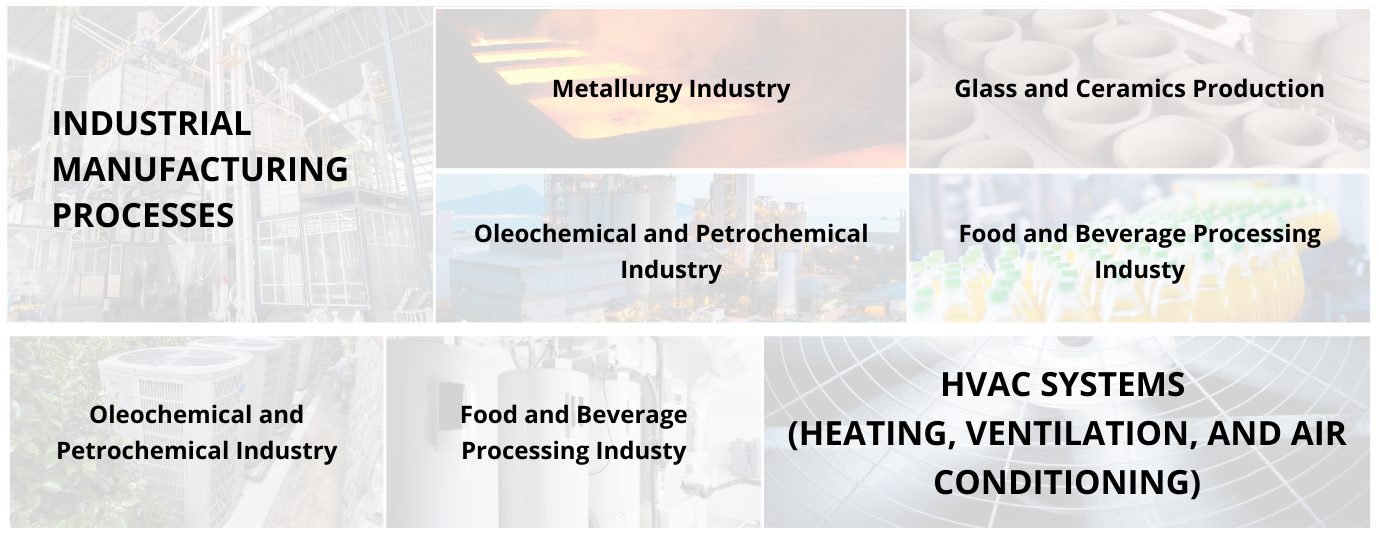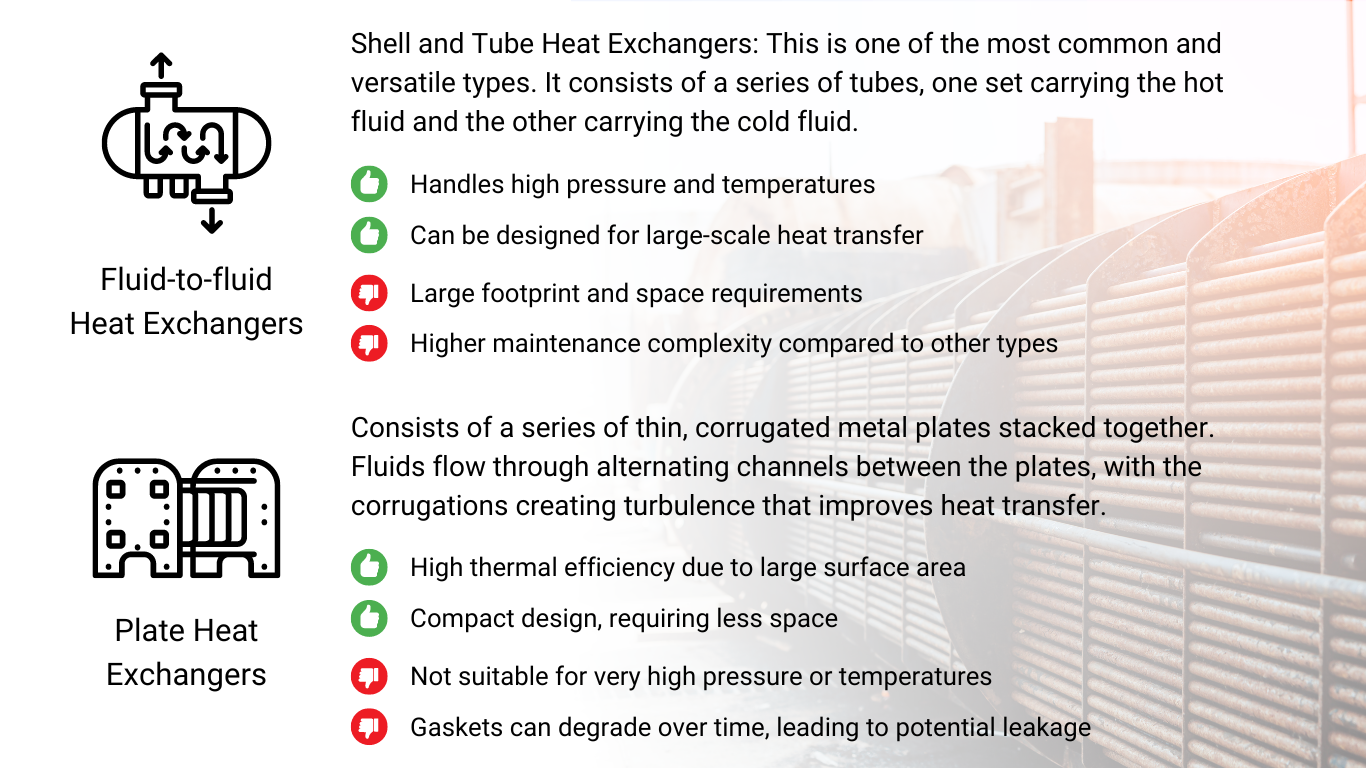Heat Recovery
Heat is generated as a byproduct often because of inefficiencies in energy use. Heat recovery is a process of capturing heat that wasted in various processes, thus reusing it for other purposes, improving energy efficiency of systems and operational lost.
Some key processes where waste heat is commonly produced:

Improve your heating system efficiency with heat exchange technology
Heat exchangers are devices designed to transfer heat between two or more fluids without allowing them to mix. They are essential in various applications, including heating, cooling, and energy recovery across industries such as smelting plants, glass and ceramic manufacturing and chemical processing
How Heat Exchangers Work
The basic principle of a heat exchanger is to facilitate thermal energy transfer from a hot fluid to a cold fluid, effectively using the heat from the hot fluid to increase the temperature of the cold fluid. This process typically involves the following components:
Heat Transfer Surfaces
These surfaces separate the hot and cold fluids. They are designed to maximize surface area to enhance heat transfer efficiency while minimizing thermal resistance.
Flow Arrangement
The fluids can flow in various arrangements, including:
- Counterflow: The hot and cold fluids flow in opposite directions. This configuration provides the highest thermal efficiency since the temperature difference between the fluids remains relatively large throughout the exchanger.
- Parallel Flow: The fluids flow in the same direction. While easier to construct, this arrangement is generally less efficient than counterflow because the temperature difference decreases along the length of the exchanger.
- Crossflow: One fluid flows perpendicular to the other. This configuration is common in air-to-air heat exchangers.
Types of Heat Exchangers

Related Content

Waste Heat Extractor System
A heat pump transfers heat from one location to another rather than generating it. In heating mode, it extracts heat from the outside air, ground, or water and transfers it indoors. In cooling mode, the process is reversed, removing heat from inside and releasing it outdoors.

